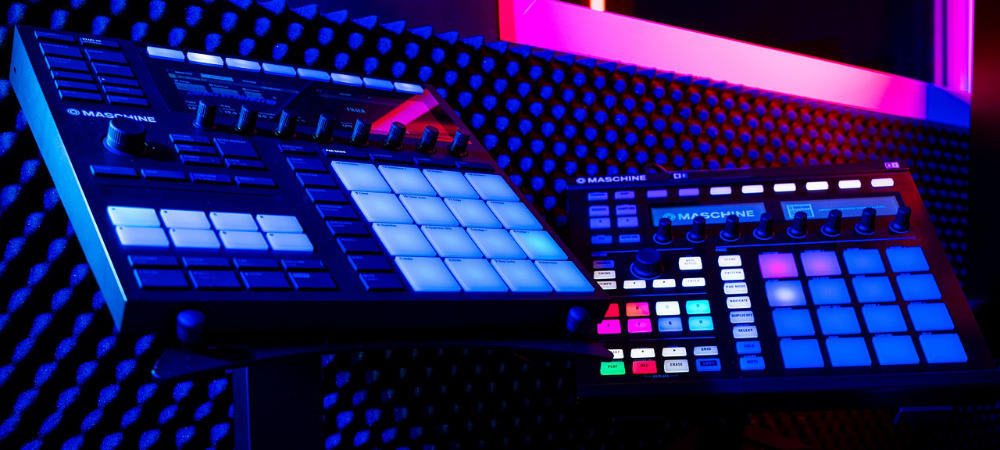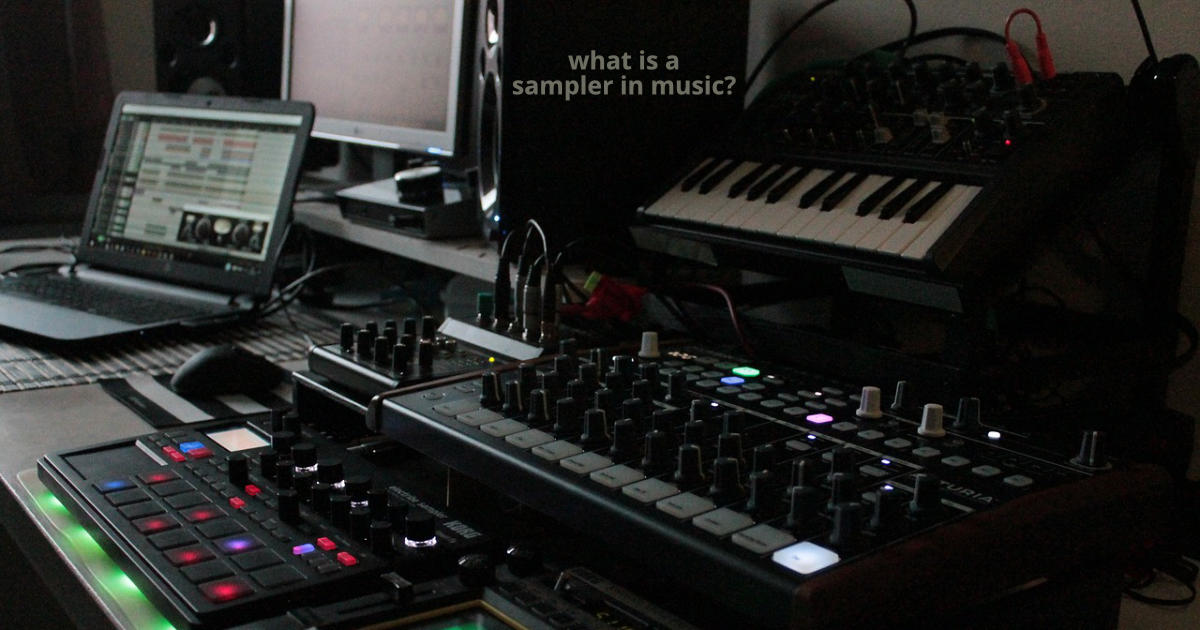Estimated reading time: 6 minutes
Sampling in music is a technique that has revolutionized the way music is created and produced. It involves taking a portion of a sound recording, known as a sample, and using it in a new piece of music. This article will explore the concept of sampling in music, its history, the technology behind it, and how it is used in modern music production.
Table of contents
Definition of Sampling
Sampling is the process of taking a small portion of a sound recording and reusing it in a new musical piece. This can include anything from a drum beat to a acapella vocal line or a melody. The sample is then manipulated and incorporated into a new composition, creating a unique sound. Sampling allows musicians to incorporate existing recordings into their own work, providing endless creative possibilities.
Sampling can be done in various ways, from using physical instruments to digital techniques. It has become an integral part of modern music production, allowing artists to experiment with different sounds and genres.
History of Sampling in Music
The history of sampling in music dates back to the early 20th century, with the use of tape recorders to manipulate and splice together sound recordings. In the 1960s and 1970s, artists began experimenting with analog tape and tape recorders to create new and innovative sounds. This era saw the birth of sampling as a creative tool in music production.
Early Sampling Technology
The early days of sampling technology involved the use of analog tape and tape recorders to capture and manipulate sound recordings. Artists would physically cut and splice tape to create new compositions, a time-consuming and labor-intensive process. Despite the limitations, this era laid the foundation for the future of sampling in music.

Analog Tape and Tape Recorders
Analog tape and tape recorders were the primary tools used for sampling in the early days of music production. Musicians would record sounds onto magnetic tape and then manipulate the tape to create new compositions. This process allowed for a certain level of creativity but was limited by the physical constraints of the tape.
- What is Phonk? Uncovering the Origins and Definition
Standalone Samplers
The evolution of sampling technology led to the development of standalone samplers, dedicated devices designed specifically for capturing and manipulating sound recordings. These samplers allowed for more precise and efficient sampling, offering musicians greater creative control over their compositions.
Popular Software and Hardware Samplers
As technology advanced, software and hardware samplers became popular tools for musicians and producers. These samplers provided a wide range of features, including sample editing, effects processing, and user-friendly interfaces. They revolutionized the way music was created, making sampling more accessible to a wider audience.
E-MU SP-1200 as an Iconic Sampler
The E-MU SP-1200 is widely regarded as one of the most iconic hardware samplers in music history. Released in 1987, it quickly gained popularity among hip-hop producers for its unique sound and sampling capabilities. The SP-1200’s distinctive sound and user-friendly interface made it a staple in sample-based music production.
Digital Memory and Capacity for Editing Samples
With the advancement of digital technology, samplers began to offer increased memory capacity and more robust sample editing capabilities. This allowed for greater flexibility and creativity in music production, as artists could manipulate and edit samples with greater precision and detail.
Sample-Based Music Production
Sample-based music production involves creating music using pre-recorded samples as the primary building blocks of a composition. This approach allows artists to draw from a wide range of sounds and genres, resulting in unique and diverse musical creations.
Creating Sample-Based Music with Real Instruments
Sample-based music production often involves using real instruments as the source of samples. Musicians can capture the sounds of traditional instruments and manipulate them to create new and innovative compositions. This approach blends the organic qualities of live instrumentation with the creative possibilities of sampling.
Using Phrase Samplers to Create Drum Loops
Phrase samplers are commonly used to create drum loops by capturing and manipulating rhythmic patterns and percussive sounds. These samplers allow for precise control over the timing and arrangement of drum samples, making them essential tools in electronic music production.
Affordable and Portable Samplers on the Market
In recent years, there has been a surge in the availability of affordable and portable samplers on the market. These compact devices offer a wide range of sampling features, making sampling more accessible to musicians and producers of all levels.
| Brand | Model | Features |
|---|---|---|
| Roland | SP-404 | Built-in effects, pattern sequencer, compact design |
| Korg | Volca Sample | Built-in step sequencer, iOS app integration |
| Teenage Engineering | PO-33 | Pocket-sized, micro drum sampler, pattern chaining |
Notable Artists Who Use Sampling in Their Music
Several notable artists have made significant contributions to the world of music through their innovative use of sampling. Peter Gabriel and Kate Bush are recognized for their pioneering approach to sampling, incorporating diverse and unconventional sounds into their compositions. Trevor Horn is another influential figure known for his use of digital samplers to create groundbreaking music.
Peter Gabriel and Kate Bush
Peter Gabriel and Kate Bush are celebrated for their experimental use of sampling in their music. They have incorporated a wide range of sound elements, from natural and ambient sounds to unconventional vocal samples, creating a truly unique sonic landscape in their compositions.
Trevor Horn and His Use of Digital Samplers
Trevor Horn is renowned for his innovative use of digital samplers, pushing the boundaries of music production with his groundbreaking work. His use of sampling technology has had a profound impact on popular music, influencing countless artists and producers across different genres.
Related Posts
- What is a Sample in Music? Demystifying Music Sampling
- How to Clear a Sample? A Step-by-Step Guide for Musicians and Producer
- What Does Quantize Mean in Music – Unlocking the Rhythm
- What is ADAT: The Digital Audio Revolution for Music Producers
FAQ
A sampler in music is a device or software that allows musicians and producers to capture and manipulate sound recordings, known as samples, for use in creating new compositions.
Sampling in music production involves taking a portion of a sound recording and incorporating it into a new piece of music. This can include anything from a drum beat to a vocal line or a melody, providing endless creative possibilities for artists.
Popular software and hardware samplers include the E-MU SP-1200, Ableton Live, Native Instruments Maschine, and Roland SP-404, among others. These samplers offer a wide range of features for capturing and manipulating sound recordings.
Notable artists who have made significant contributions to music through their innovative use of sampling include Peter Gabriel, Kate Bush, and Trevor Horn, among others. Their pioneering approach to sampling has had a lasting impact on the music industry.
Sampling technology has evolved from the use of analog tape and tape recorders to standalone hardware and software samplers with advanced features. The advancement of digital technology has greatly expanded the creative possibilities of sampling in music production.
